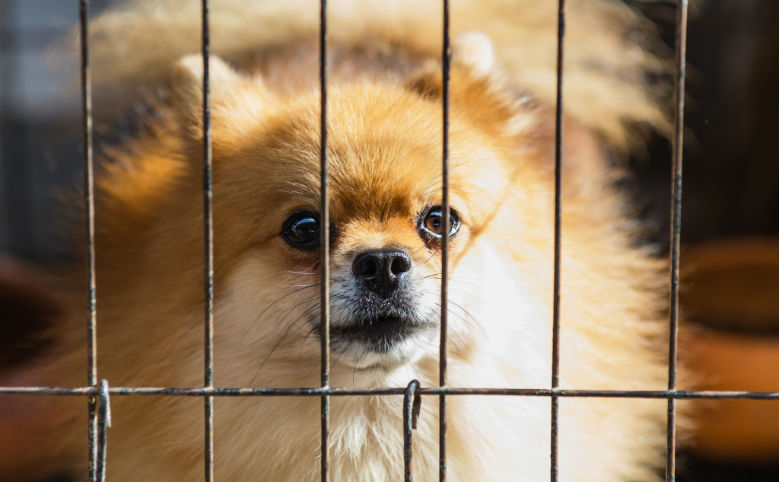How long can you leave a puppy in a crate? If you have a new pup, this is a question you need to be asking yourself a lot. Eventually, you will need to run errands or leave for work. What happens then? How long can a puppy stay in a crate?
The real question you should ask yourself when wondering how can a puppy be in a crate is: how long can a puppy hold its bladder?
How Long Do You Crate a Puppy?
How long you can crate a pup depends on a number of factors, but the largest factor has to do with age. Generally, you should take a look at the number of months of your puppy and use it as a rough guideline. A five-month-old puppy, for example, can be crated for four to six hours at most. A four-month old may be able to last three to five hours.
All dogs, even grown dogs, should be crated for no more than nine hours.
Puppies still in house training may need more frequent breaks. Puppies younger than six months will need a potty break during the middle of the day.

It is important to err on the side of caution when crating. Crating a puppy during the day for too long can cause separation anxiety and can lead the pup to have an accident in the crate. This can lead to stress and accidents as well as urinary tract infections if your puppy tries to hold on. You may also have a harder time with training if you keep your puppy in a crate too long and he or she develops a habit of going potty in the crate.
If you have a younger puppy, this means you may need to hire a friend, family member or pet sitter to drop by your house to take your puppy out.
Age is not the only factor when determining how long you can create your puppy. Temperament, medical history, medical conditions, personality and other factors all impact how long you can crate your fur baby. Some breeds don’t like being left alone for long periods of time and may need more attention, for example. Some medical conditions may mean dogs need to use the washroom more frequently, meaning you're going to have to hire a pet sitter or make some other arrangements.

Smaller dogs also have smaller bladders. They may need to be crated for shorter periods of time and may need to get rest breaks more often.
How to Crate Train a Puppy During the Day
If you want to crate train your puppy, keep in mind that crate training is a process for ensuring that your puppy sees the crate as a safe place of their own. You want to create a situation where your puppy looks forward to spending time in their crate. Crate training your puppy offers many benefits. You can make training easier and can offer your furbaby added security and comfort even when you're gone.
Crate training also ensures your puppy can stay safe when you're not around and keeps your furniture and other household items safe, too.
When trying to crate train your puppy, go slowly and start with incremental uses of the crate. Get a special blanket in there and keep the environment comfortable. When your pup is in the crate, make sure it's not being bothered. Use positive reinforcement and lots of treats to encourage your furbaby to enjoy their time in their space.

Even when you're using the crate, you'll want to be able to supervise your pup correctly. Furbo Dog Camera is a two-way communication system that lets you check on your fur baby, no matter where you are. With an HD and night vision camera, you can use the treat dispenser as well as the camera to interact with your dog.










